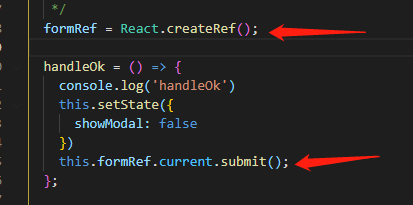I want to implement the partial updates for my resource as i have large resource and want to update the partial information from it.I have gone through the following links but not
able to figure out whether to use HTTP POST or PATCH methods.
HTTP MODIFY verb for REST?
How to submit RESTful partial updates?
http://jacobian.org/writing/rest-worst-practices/
https://github.com/archiloque/rest-client/issues/79
http://tools.ietf.org/html/draft-dusseault-http-patch-16
http://greenbytes.de/tech/webdav/draft-dusseault-http-patch-06.html
http://jasonsirota.com/rest-partial-updates-use-post-put-or-patch
http://bitworking.org/news/296/How-To-Do-RESTful-Partial-Updates
https://github.com/dharmafly/jsonpatch.js
Please suggest any valid solution for this.
According to RFC5789 (http://tools.ietf.org/html/rfc5789), this is precisely what PATCH is for:
Several applications extending the Hypertext Transfer Protocol (HTTP)
require a feature to do partial resource modification. The existing
HTTP PUT method only allows a complete replacement of a document.
This proposal adds a new HTTP method, PATCH, to modify an existing
HTTP resource.
The distinction between PATCH and PUT is described as:
The difference between the PUT and PATCH requests is reflected in the
way the server processes the enclosed entity to modify the resource
identified by the Request-URI. In a PUT request, the enclosed entity
is considered to be a modified version of the resource stored on the
origin server, and the client is requesting that the stored version
be replaced. With PATCH, however, the enclosed entity contains a set
of instructions describing how a resource currently residing on the
origin server should be modified to produce a new version.
The limitations of POST are also described:
The PUT method is already defined to overwrite a resource
with a complete new body, and cannot be reused to do partial changes.
Otherwise, proxies and caches, and even clients and servers, may get
confused as to the result of the operation. POST is already used but
without broad interoperability (for one, there is no standard way to
discover patch format support) [...]
I would suggest you read the RFC and make up your own mind, but to me this seems fairly clear-cut - PATCH requests should be processed as partial updates. (NB they are NOT idempotent, unlike PUT.)
EDIT: as pointed out by Eugene in the comments, although PATCH requests are "neither safe nor idempotent as defined by [RFC2616]", they can be made so:
A PATCH request can be issued in such a way as to be idempotent,
which also helps prevent bad outcomes from collisions between two
PATCH requests on the same resource in a similar time frame.
Collisions from multiple PATCH requests may be more dangerous than
PUT collisions because some patch formats need to operate from a
known base-point or else they will corrupt the resource. Clients
using this kind of patch application SHOULD use a conditional request
such that the request will fail if the resource has been updated
since the client last accessed the resource. For example, the client
can use a strong ETag [RFC2616] in an If-Match header on the PATCH
request.
You should use method PATCH like described in RFC-7386 "json merge PATCH".
E.g. if you want to change value of "a" and removing "f" in resource like:
{
"a": "b",
"c": {
"d": "e",
"f": "g"
}
}
You can achive this by sending:
PATCH /target HTTP/1.1
Host: example.org
Content-Type: application/merge-patch+json
{
"a":"z",
"c": {
"f": null
}
}
PATCH is to be used with a patch format, for document-level patching only (aka a diff on the actual representation). Its use for other purposes is dubious and debatable, and it's not clear that the method was designed for non-media-type uses.
In general a POST will be the right approach, but you may want to split your resource into multiple resources instead and modify those instead.
[Edited for clarity, as some don't read comments]





